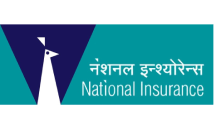Planning for retirement is essential so that you have a good corpus when your earning stops. That is why pension plans are offered by life insurance companies which help you accumulate a retirement corpus for your needs. LIC New Jeevan Nidhi Plan is one such retirement oriented pension plan which gives good returns on your premiums so that you can build up a substantial corpus.
Overview of LIC Jeevan Nidhi Plan
LIC New Jeevan Nidhi Plan is a traditional deferred pension plan. You can choose a policy term, pay premiums over the term and build up a retirement corpus. You also get life insurance coverage over the policy tenure that you choose so that you can take care of your protection needs. When the plan matures you can use the corpus to receive annuities to fund your retirement.
Salient features of LIC Jeevan Nidhi Plan
The plan has the following salient features –
- Guaranteed additions are added to the corpus of the plan in the first five policy years, thereby increasing it
- This is a participating plan which earns bonuses from the sixth policy year
- There is an optional rider under the policy which increases the scope of coverage of the plan
- The premiums can be paid throughout the policy period or only once
- You get two types of premium discounts which help in lowering the premium of the policy
- 1/3rd of the maturity benefit can also be withdrawn in cash through commutation. This benefit would be tax-free in your hands
Benefits offered by LIC Jeevan Nidhi Plan
The different types of benefits which you can get under LIC New Jeevan Nidhi Plan are as follows –
- Vesting benefit
When the term of the plan comes to an end, the sum assured, guaranteed additions added, vested reversionary bonuses and a final additional bonus is offered as the vesting benefit. You have three options of utilising the vesting benefit which is as follows –- Withdraw 1/3rd of the corpus in cash and then avail annuity incomes from the remaining 2/3rd part of the corpus. Annuity incomes can be availed by buying an immediate annuity policy from LIC
- Buy a single premium deferred pension policy from LIC
- Use the entire vesting benefit to receive annuity payments by buying an immediate annuity policy from LIC
- Death benefit
If the insured dies during the term of the policy, the death benefit would be paid. This benefit would depend on the period of death. If the insured dies within the first five years of the policy, the sum assured and accrued guaranteed additions will be paid. If, on the other hand, the insured dies after the first five years of the policy, the sum assured, accrued guaranteed additions, vested reversionary bonuses and a final additional bonus is paid. The minimum death benefit would be at least 105% of the total premiums paid under the policy. The nominee can receive the death benefit in a lump sum or in annuity instalments, as desired. - Guaranteed additions
The plan earns guaranteed additions during the first five policy years. This addition is added @ INR 50 per INR 1000 sum assured. - Bonus
Since the plan is a participating pension plan, simple reversionary bonuses are added to the policy corpus every year starting from the 6th policy year. The bonuses are paid if LIC earns a profit in a financial year. Moreover, when the policy matures or if the insured dies during the policy tenure, a final additional bonus might also be added to the corpus. - Optional rider benefit
LIC’s Accidental Death and Disability Benefit Rider is available under the plan which you can choose as an optional coverage benefit. Under this rider, an additional sum assured is paid if the insured dies in an accident. Moreover, if the insured becomes disabled in an accident, the rider sum assured is paid in monthly instalments for ten years. Moreover, the premium for the rider would also be waived for the remaining term of the plan. - Premium discounts
There are premium discounts under the policy which helps to lower the premium. The discounts available under the policy are as follows –- Modal discounts:
If you pay premiums annually, you get a 2% premium discount and if you pay premiums half-yearly you get a 1% premium discount under the policy - High sum assured rebate:There are discounts if you choose a high level of sum assured. If you pay regular premiums and the sum assured is INR 3 lakhs and above, the discount is 2% of the sum assured. If, however, you pay a single premium policy, the discount would be 5% of the sum assured if the sum assured is INR 3 lakhs and above.
- Modal discounts:
Eligibility parameters of LIC Jeevan Nidhi Plan
| Entry age | Minimum – 20 yearsMaximum:Regular premium payment – 60 yearsSingle premium payment – 58 years |
| Vesting age | 55 years to 65 years |
| Term of the plan | Regular premium – 7 years to 35 yearsSingle premium – 5 years to 35 years |
| Sum assured | Minimum:Regular premium payment – INR 1 lakhSingle premium payment – INR 1.5 lakhs |
| Premium payment term | Regular premium – equal to the term of the planSingle premium – once |
Surrender, paid-up and cancellation of LIC Jeevan Nidhi Plan
- Paid-up value
Under regular premium plans, if the policy term is less than 10 years and if at least two years’ premiums have been paid, the policy acquires a paid-up value. If, however, the term is 10 years and above, at least three years’ premiums would be required before the plan acquires a paid-up value. The paid-up value becomes applicable if premiums are discontinued over the policy period. If the policy becomes paid-up, the sum assured also reduces. It would be calculated as follows –Paid-up sum assured = (number of premiums paid / total number of premiums payable) * sum assuredThis paid-up sum assured would be paid on death or vesting along with the accrued guaranteed additions and bonuses added to the policy before the premiums were discontinued. - Surrender value
Terminating the policy before the completion of the tenure is called surrender. Under single premium policies, surrender can be done anytime over the policy duration. If you surrender within the first three years of the plan, 70% of the single premium would be paid. However, if you surrender after the completion of the first three years, 90% of the single premium would be paid as surrender value.Under regular premium plans, surrender is allowed only when the plan acquires a paid-up value. When the policy is surrendered, the surrender value payable would be calculated as follows –Surrender value = {(surrender value factor * aggregate premiums paid) + [surrender value factor of guaranteed additions and bonuses * (guaranteed additions + vested bonuses accrued under the plan)]}The surrender value can be used to avail annuity payments. You can also withdraw 1/3rd of the value in cash and use the remaining to receive annuities. - Cancellation
The policy allows a cooling-off period of 15 days from the date the policy is issued. If you don’t want to continue the policy after buying it, you can cancel the plan during this cooling-off period. Upon cancellation, you would receive a refund of your premiums after deducting the relevant charges incurred in issuing the policy.
Exclusions under LIC Jeevan Nidhi Plan
Under LIC’s New Jeevan Nidhi Policy, the following instances of suicides would be excluded from coverage –
- If the insured commits suicide within 12 months of buying a single premium policy, the death benefit would be excluded. 90% of the single premium paid would be refunded in such cases
- If the insured commits suicide within 12 months of buying a regular premium policy, 80% of the premiums paid would be refunded as death benefit
- If the insured commits suicide within 12 months of reviving a lapsed policy, higher of 80% of the premiums paid or the surrender value of the plan would be paid as claim
Sample premium rates of LIC Jeevan Nidhi Plan
Here are the premiums which would be payable when different plan parameters are combined together. The sum assured is taken to be INR 5 lakhs and the regular premiums are assumed to be paid annually –
| Age of the insured | Regular premium payment | Single premium payment | ||||
| Term 10 years | Term 20 years | Term 30 years | Term 10 years | Term 20 years | Term 30 years | |
| 35 years | NA | INR 16,264 | INR 7052 | NA | INR 281,000 | INR 203,075 |
| 45 years | INR 46,473 | INR 18,009 | NA | INR 401,275 | INR 291,400 | NA |
How does LIC Jeevan Nidhi Plan work?
Let’s say you buy a single premium policy for a sum assured of INR 5 lakhs. The term is 30 years and you are aged 35 years. The premium that you would have to pay would be INR 203,075. Here’s how the policy would work –
- In the first five years of the plan, INR 25,000 would be added as guaranteed addition under the policy
- From the 6th policy year, non-guaranteed bonuses would be added
- In case of death during the 10th policy year, INR 5 lakhs + INR 1.25 lakhs (INR 25,000*5) + vested bonuses would be paid as death benefit
- If, on the other hand, the plan matures, INR 5 lakhs + INR 1.25 lakhs + vested bonuses + final additional bonus would be the vesting benefit
- You can withdraw 1/3rd of the vesting benefit as tax-free income. The remaining 2/3rd should be used to buy an immediate annuity plan from LIC
- You can also use the entire vesting benefit to buy an immediate annuity plan from LIC
- If you don’t want to start receiving annuities immediately, you can buy a single premium deferred annuity plan from LIC
Tax implications of LIC Jeevan Nidhi Plan
Here are the different types of tax implications of LIC’s New Jeevan Nidhi Plan –
- Tax implication on premiums
The premiums paid are allowed as a deduction under Section 80CCC. You can claim a deduction of up to INR 1.5 lakhs by paying premiums for the policy. - Tax implication on vesting benefit
If you withdraw 1/3rd of the corpus of the policy, the withdrawn amount is called commuted pension. This commuted pension is tax-free in your hands without any maximum limit. The tax exemption is available under Section 10 (10A).The annuity received from the policy, however, is a taxable income. It would be added to your income and taxed at your applicable tax slab rate. - Tax implication of death benefit
The death benefit received under the policy is completely tax-free in the hands of the nominee under Section 10 (10D). However, if the nominee chooses to receive annuities from the death benefit, the annuities so received would be taxed at the income tax slab rate of the nominee.
How to buy LIC Jeevan Nidhi Plan?
You can buy the policy from the branch office of LIC or from a licensed LIC agent. However, these modes of buying are offline which involve a lot of hassles. To buy conveniently, you can choose to buy online through the official website as well.
How to make a claim under the LIC Jeevan Nidhi Plan?
If the policy is maturing, you would have to choose the vesting benefit option that you want. This choice should then be communicated to LIC for at least 6 months before the vesting date.
In case of death of the insured, the nominee is required to inform LIC about the death of the insured. Then, proper documentation is to be filed so that the company processes and releases the death claim.
You can also make a claim under LIC’s New Jeevan Nidhi Plan through Turtlemint if you have bought the policy from the company. Just call Turtlemint at 1800 266 0101 or send a mail to claims@turtlemint.com. After being intimidated, the company’s claim team would take the necessary action and get your claims settled.
Documents required for making claims under LIC Jeevan Nidhi
If you are commuting a part of the vesting benefit, the following documents would be required –
- Policy bond
- Identity proof
- Claim form
- Details of your bank account
In case of death claims, however, the following documents would be required to be submitted –
- Policy bond
- Identity proof of the claimant
- Death certificate
- Claim form 3783
- Details of the bank account of the claimant
- In case of accidental death, police FIR, post mortem report, coroner’s report, etc. would be required in addition to the above-mentioned documents
FAQ’s
Yes, you can pay premiums monthly if the policy has been issued under the Salary Saving Scheme.
The rider can be taken for a minimum sum assured of INR 1 lakh and a maximum sum assured of INR 50 lakhs.
You can pay the premiums through cash, cheque, demand draft, credit card, debit card, net banking facility, mobile wallets, NEFT, RTGS, IMPS or any other online payment means.






















